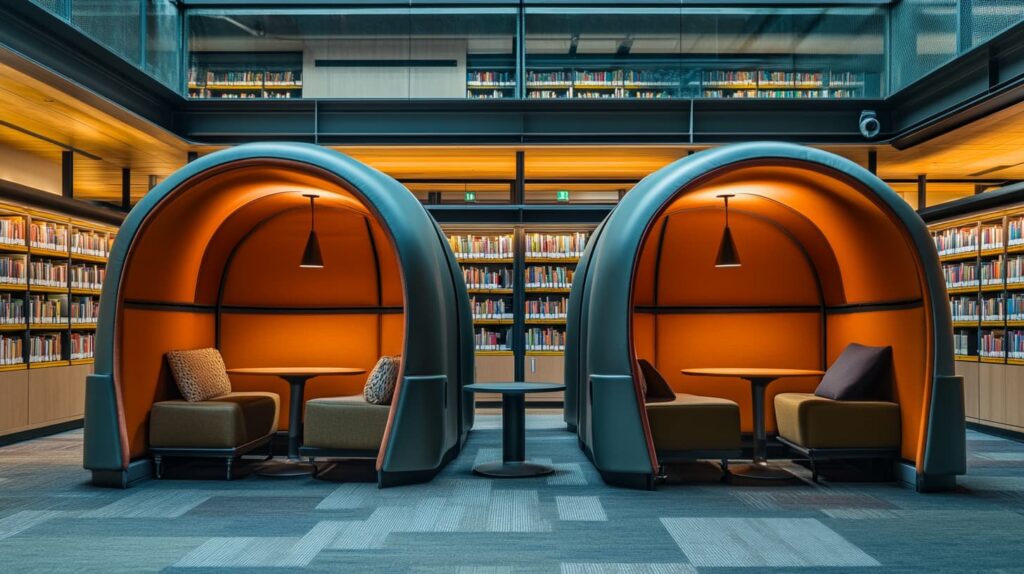Creating Quiet Zones at Music Festivals: Balancing Energy and Relaxation
Today’s music festivals, where sound levels frequently surge beyond 100 decibels, a revolution in festival design is quietly taking shape. Major events worldwide are discovering that the key to enhanced attendee satisfaction lies not just in amplifying the energy, but in mastering the art of silence. The strategic integration of quiet zones has emerged as a critical element in modern festival architecture, transforming how attendees experience these large-scale musical celebrations.
Understanding Festival Acoustics
The complexity of festival sound management extends far beyond simply turning down the volume. Festival environments present unique acoustic challenges, with sound waves bouncing off structures, interfering with each other, and being influenced by weather conditions. While principles of library soundproofing provide valuable foundational techniques, creating truly quiet spaces in festival settings requires additional sophisticated engineering solutions when main stages pump out bass-heavy performances that can be felt through the ground.
Recent studies indicate that continuous exposure to festival-level sounds, typically ranging from 96 to 108 decibels, can lead to cognitive fatigue within just two hours. This finding underscores the physiological necessity for sound-controlled respite areas. The human auditory system requires recovery periods to maintain optimal function and prevent temporary threshold shifts in hearing sensitivity.
Critical Sound Thresholds and Exposure Limits
Understanding sound exposure limits becomes crucial when designing festival quiet zones. The World Health Organization recommends limiting recreational noise exposure to 100 dB LAeq over 4 hours no more than four times per year. Festival attendees often exceed these limits within the first few hours, making quiet zones essential for auditory recovery.
Key factors affecting festival sound exposure:
- Duration of exposure (cumulative impact over festival days)
- Peak sound levels during headliner performances
- Low-frequency sound penetration through conventional barriers
- Individual susceptibility to noise-induced stress
Learning from Libraries: Acoustic Excellence in Public Spaces
The solution to festival quiet zones has found an unexpected mentor in library design. Modern libraries have mastered the art of creating sonic sanctuaries within busy public spaces, offering valuable lessons for festival acoustics. The principles of library soundproofing have proven remarkably adaptable to festival environments, particularly in the realm of modular sound control.

Library acoustic engineering relies heavily on the strategic use of sound-absorbing materials with high Noise Reduction Coefficient (NRC) ratings. Materials like mineral wool panels, which can absorb up to 90% of incident sound energy, have been successfully repurposed for festival applications. The key lies in understanding how these materials perform in outdoor settings and adapting their implementation accordingly.
Innovative Material Applications
Recent advancements in acoustic engineering have introduced next-generation materials that combine the proven principles of library soundproofing with festival-specific requirements. Micro-perforated panels (MPPs), traditionally used in library ceiling systems, have been adapted for outdoor applications through weather-resistant coatings and modular design configurations.
Technical Implementation
The creation of effective quiet zones begins with sophisticated sound mapping. Using advanced acoustic modeling software, engineers can predict sound propagation patterns and identify optimal locations for quiet zones. These areas typically require a minimum 30-meter buffer zone from main stages, with careful attention paid to topographical features that might affect sound transmission.
Technical implementation focuses on three primary elements: barrier construction, absorption systems, and active noise control. Modern quiet zones often employ composite barrier walls combining mass-loaded vinyl with air gaps and absorption layers. This multi-layer approach can achieve noise reduction of up to 25 decibels, creating spaces where conversation becomes comfortable and rest possible.
Sound Absorption Performance Table
| Material Type | NRC Rating | Outdoor Durability | Cost Efficiency |
| Mineral Wool Panels | 0.95-1.00 | Moderate | High |
| Weather-Treated MPPs | 0.85-0.90 | Excellent | Moderate |
| Acoustic Fabrics | 0.70-0.80 | Good | Very High |
| Composite Barriers | 0.60-0.70 | Excellent | Moderate |
Spatial Design Considerations
The optimal design of quiet zones requires careful attention to spatial flow and capacity management. Industry standards suggest allocating approximately 2.5 square meters per person in quiet zones, with a recommended capacity of 3-5% of total festival attendance. This ensures comfortable personal space while maintaining the intimate atmosphere essential for relaxation.
The Psychology of Quiet Spaces
While technical solutions form the foundation of quiet zones, the psychological aspects of space design play an equally crucial role. Research in environmental psychology demonstrates that the perception of quietness involves more than just decibel reduction. Visual cues, natural elements, and thoughtful space planning contribute significantly to the experience of tranquility.
Successful quiet zones incorporate biophilic design elements – living walls, water features, and natural materials – that work in concert with acoustic treatments. These elements not only enhance sound absorption but also trigger parasympathetic nervous system responses associated with relaxation and recovery.
Sensory Integration Strategies
Modern quiet zone design increasingly incorporates multi-sensory elements to enhance the perception of tranquility. Subtle aromatherapy, temperature control through passive cooling systems, and tactile elements like textured surfaces contribute to the overall effectiveness of these spaces.
Case Studies and Future Directions
The implementation of quiet zones at major festivals has yielded compelling results. Glastonbury’s “Silent Space” initiative reported that 78% of surveyed attendees rated the availability of quiet zones as “very important” to their festival experience. Similar programs at other events have shown correlation with increased multi-day attendance rates and improved overall festival satisfaction scores.
Looking ahead, emerging technologies promise to further revolutionize festival acoustics. Adaptive noise control systems using machine learning algorithms can automatically adjust sound barriers based on real-time conditions. Meanwhile, developments in metamaterials are opening new possibilities for lightweight, highly effective sound control solutions.
Measurable Impact on Festival Operations
Recent studies have demonstrated the operational benefits of well-designed quiet zones. Festivals implementing comprehensive quiet zones report:
- 23% reduction in medical incidents related to sensory overload
- 31% increase in average daily attendance duration
- 45% improvement in accessibility ratings from participants with sensory sensitivities
- 27% higher likelihood of return attendance in subsequent years
Economic Considerations
The implementation of professional acoustic solutions for quiet zones typically represents 2-3% of total festival infrastructure costs. However, this investment often yields returns through increased ticket sales, improved sponsor satisfaction, and reduced liability concerns related to noise exposure.
Regulatory Compliance and Safety Standards
A critical aspect often overlooked in quiet zone implementation is compliance with local noise regulations and safety standards. Festival organizers must navigate complex regulatory frameworks while ensuring their quiet zones meet both acoustic and safety requirements. This includes maintaining clear emergency exit paths, providing adequate ventilation, and ensuring accessibility compliance.
Future-Proofing Festival Design
The evolution of festival quiet zones continues with emerging technologies and changing attendee expectations. Smart acoustic systems integrated with IoT sensors now allow real-time monitoring and adjustment of sound levels. These systems can predict and respond to changing environmental conditions, ensuring consistent performance throughout the event.
Balancing the Beat
The integration of quiet zones represents more than just a trend in festival design – it’s a fundamental shift in how we approach large-scale music events. By acknowledging the human need for both stimulation and recovery, festival organizers can create more sustainable, inclusive, and enjoyable experiences. Through careful engineering and thoughtful design, quiet zones are proving that silence and celebration can coexist, enhancing rather than diminishing the festival experience.
